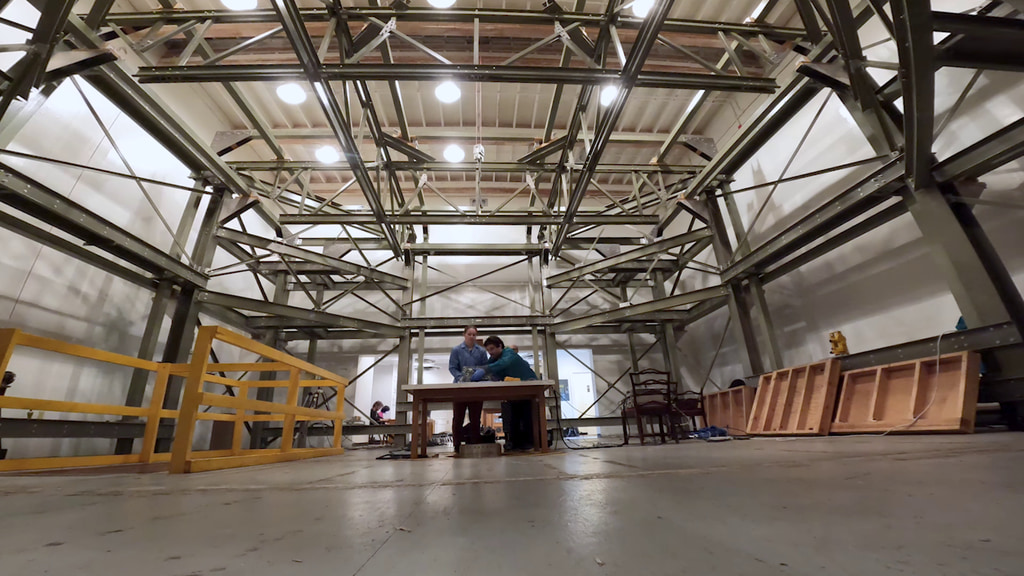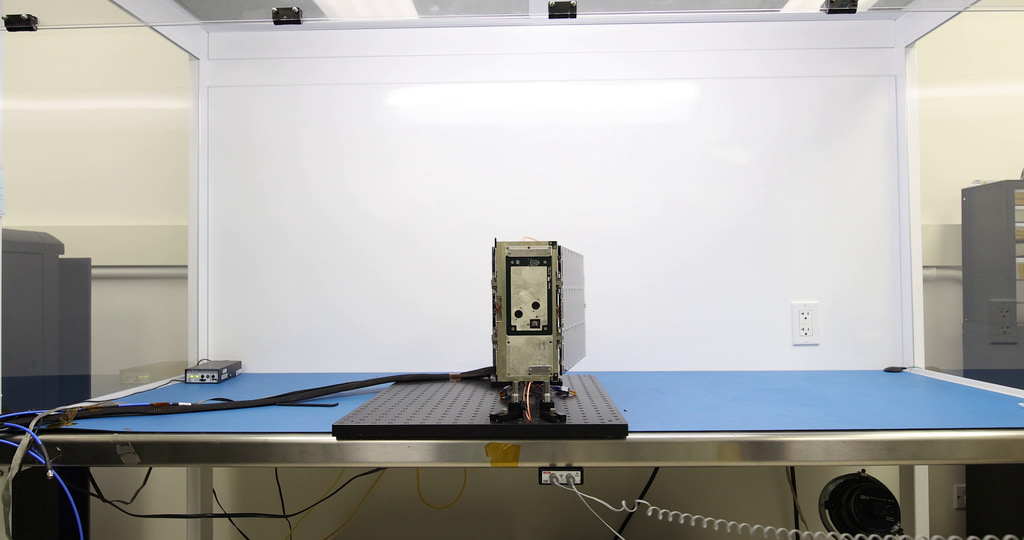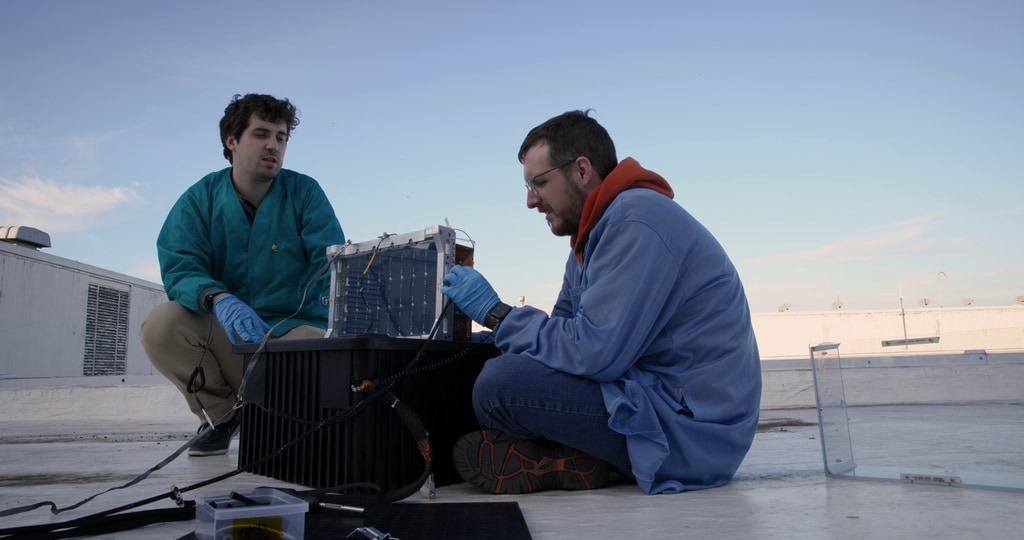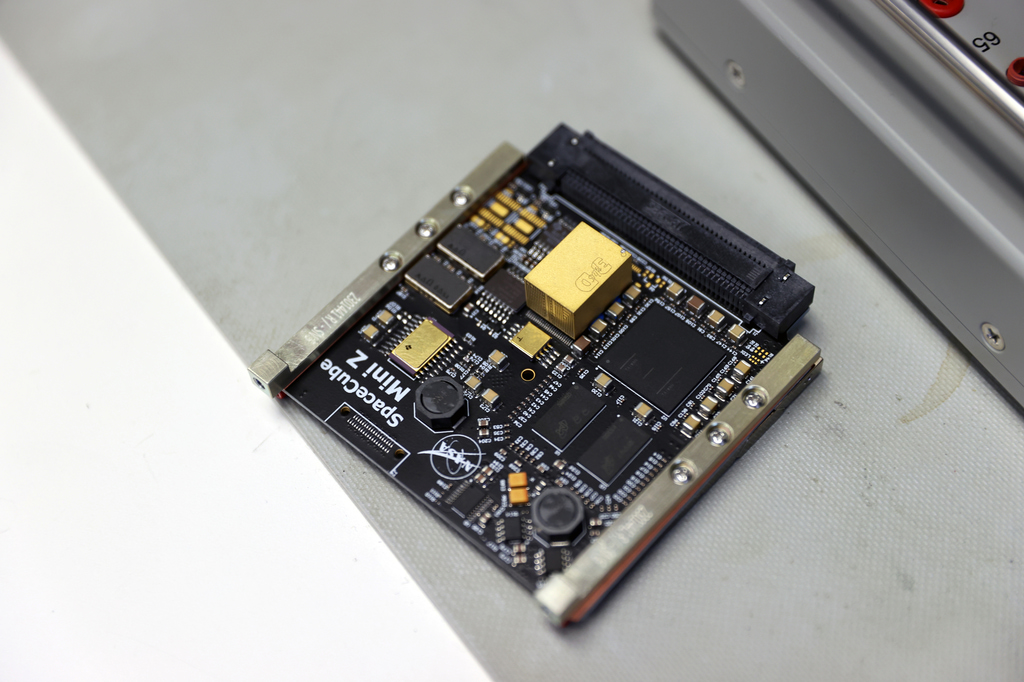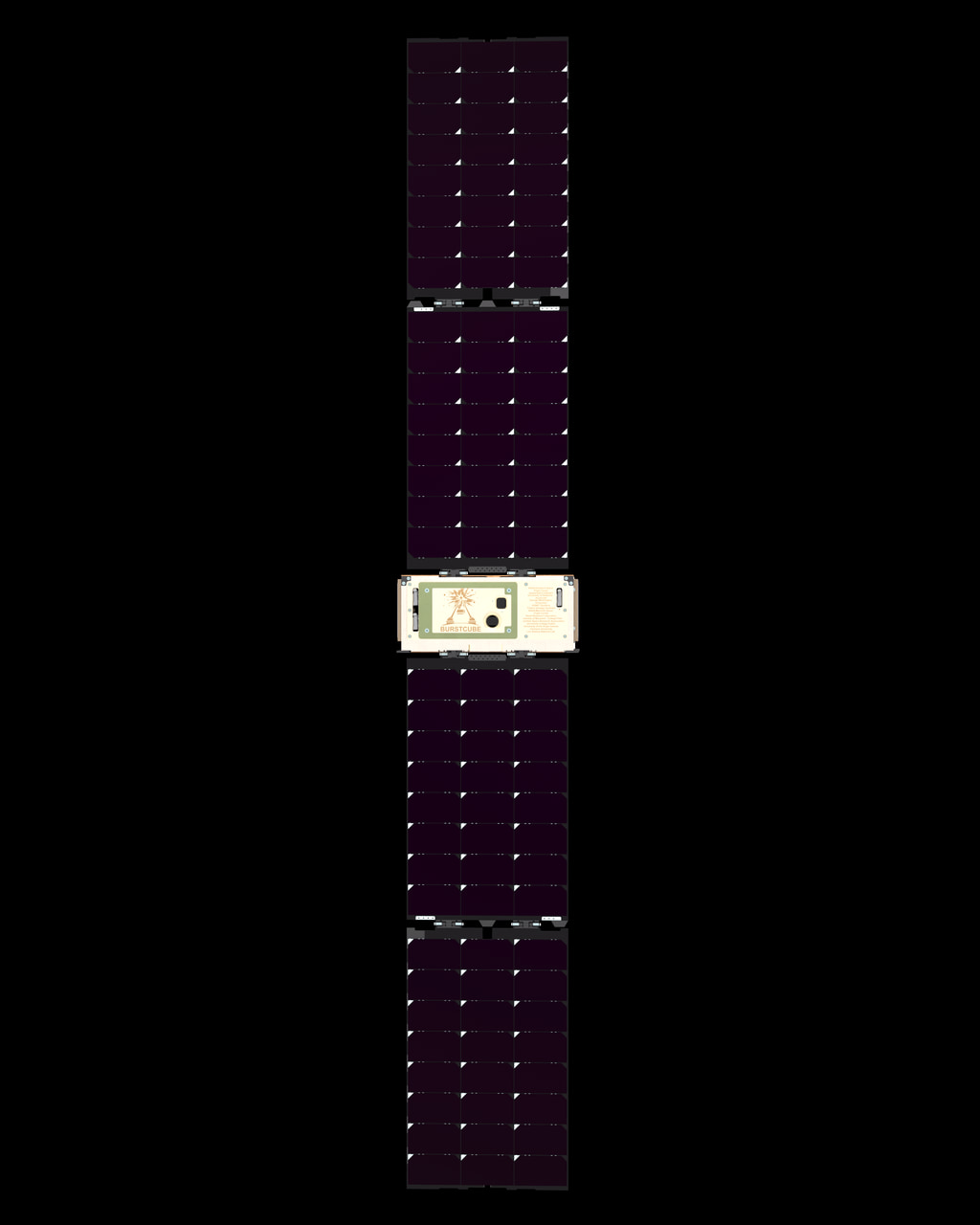BurstCube Completes Thermal Vacuum Testing
BurstCube is a mission developed at NASA’s Goddard Space Flight Center in Greenbelt, Maryland. The spacecraft is slated for takeoff in March 2024 from NASA’s Kennedy Space Center in Florida aboard a resupply mission to the International Space Station.
This CubeSat will detect short gamma-ray bursts, brief flashes of the highest-energy form of light. Dense stellar remnants called neutron stars create these bursts when they collide with other neutron stars or black holes. Short gamma-ray bursts, which last less than 2 seconds, are important sources for gravitational wave discoveries and multimessenger astronomy.
As BurstCube orbits, it will experience major temperature swings every 90 minutes as it passes in and out of daylight. The team evaluated how the spacecraft will operate in these new conditions using a thermal vacuum chamber at Goddard, shown in these images and video, where temperatures ranged from minus 4 to 113 degrees Fahrenheit (minus 20 to 45 Celsius).
This video shows NASA engineers securing the BurstCube satellite in a thermal vacuum chamber for testing. The first shot shows a thermal vacuum chamber lab at NASA’s Goddard Space Flight Center in Greenbelt, Maryland. The second clip shows Julie Cox (NASA) and Seth Abramczyk (NASA) moving BurstCube, still in a clear protective case, from a table to the chamber platform. The next shot shows Cox and Abramczyk talking over the spacecraft, now without the covering. NASA engineers Franklin Robinson and Elliot Schwartz look on. In the fourth and fifth shots, all four engineers work to move BurstCube into position. In the sixth shot, Cox props one of the solar panels slightly open so they can test it when the spacecraft is in the chamber. In the next shot, Cox, Abramczyk, and Robinson make more adjustments. The eighth shot shows one side of BurstCube, which is engraved with the mission’s logo and the names of partner institutions. The following two clips show wider views of the spacecraft on the chamber platform. The eleventh shot shows Abramczyk and Cox typing at their computers. The twelfth shot shows a computer screen with a feed from a camera on the chamber platform. A smiling Abramczyk pops in and out of view. The thirteenth clip shows Cox deploying one solar panel with Abramczyk and Robinson in the background. The fourteenth shot shows Schwartz, Robinson, Abramczyk, and Colton Cohill (NASA) moving the top of the chamber into place. The fifteenth through nineteenth shots show the engineers steadying the lid as it lowers slowly into place. Shot twenty shows Schwartz securing the top of the lid. Shot twenty-one shows a pan of the sealed chamber. The final shot shows a data readout on a computer screen.
Credit: NASA/Sophia Roberts

Julie Cox (NASA) and Justin Clavette (SSAI) work on the BurstCube spacecraft ahead of testing in a thermal vacuum chamber at NASA’s Goddard Space Flight Center in Greenbelt, Maryland, while Robert Moss (NASA) looks on.
Credit: NASA/Sophia Roberts
Alt text: This photograph shows two people working on the BurstCube satellite.
Descriptive text: A woman in a long-sleeved red jacket and blue gloves leans over a shiny rectangular spacecraft. The spacecraft sits on a circular platform covered in wires. To the left of her is a man in a blue long-sleeved jacket and gloves. He’s looking down at something out of frame. They are observed by a third man in a blue jacket. Behind them stretches a lab space with white walls, ductwork in the ceiling, and a variety of lab equipment.

NASA engineers Julie Cox, Seth Abramczyk, and Franklin Robinson work to adjust the BurstCube spacecraft ahead of thermal vacuum testing at NASA’s Goddard Space Flight Center in Greenbelt, Maryland.
Credit: NASA/Sophia Roberts
Alt text: This photograph shows three people working on a spacecraft in a lab.
Descriptive text: In this image, two men in blue long-sleeved jackets stand on the left-hand side. One is holding one side of a smally shiny spacecraft. Across from him a woman in a long-sleeved red jacket is holding the other end. The spacecraft is standing on a circular platform in a laboratory with gray ductwork on the walls and a variety of equipment.

NASA engineers Franklin Robinson, Elliot Schwartz, and Colton Cohill secure the lid of a thermal vacuum chamber at NASA’s Goddard Space Flight Center in Greenbelt, Maryland. The BurstCube team used the chamber to test how the satellite will operate in conditions like those it will experience in space.
Credit: NASA/Sophia Roberts
Alt text: This image shows engineers securing the lid of a thermal vacuum chamber.
Descriptive text: This photograph shows three men in long-sleeved blue jackets, blue gloves, and red hard hats. They’re standing around a thermal vacuum chamber, which has a square silver base and a conical white top. On the left, a man hands a wrench to another man, who is standing on the base of the chamber. On the right, the third man looks up at the top of the chamber. They are in a lab with a high ceiling and lots of electrical equipment. An American flag hangs from the ceiling.

This photo shows engineers attaching BurstCube to the platform of a thermal vacuum chamber at NASA’s Goddard Space Flight Center in Greenbelt, Maryland.
Credit: NASA/Sophia Roberts
Alt text: This photograph shows four people preparing the BurstCube satellite for thermal vacuum testing.
Descriptive text: This image shows three men and a woman adjusting the BurstCube satellite on a small platform in a lab. The men wear long-sleeved blue jackets, the woman wears a red one. They all wear gloves. The team stands in a circle around the satellite. The satellite is a small rectangular box with a black solar panel on top, and the people are placing it on the platform. White pipes and machinery take up the foreground on the left-hand side. In the background of the cluttered lab with large tool chests, a ladder on the wall, and office chares. Other people look on as the team works.
Credits
Please give credit for this item to:
NASA's Goddard Space Flight Center
-
Producer
- Sophia Roberts (Advocates in Manpower Management, Inc.)
-
Science writer
- Jeanette Kazmierczak (University of Maryland College Park)
Release date
This page was originally published on Monday, December 18, 2023.
This page was last updated on Thursday, December 14, 2023 at 5:17 PM EST.
